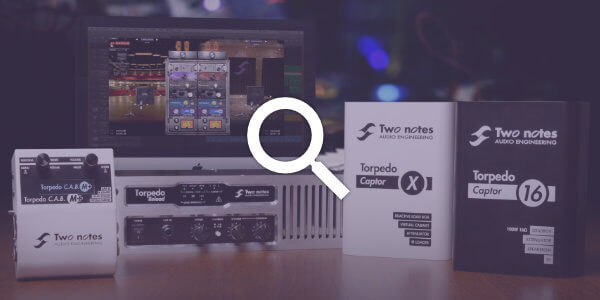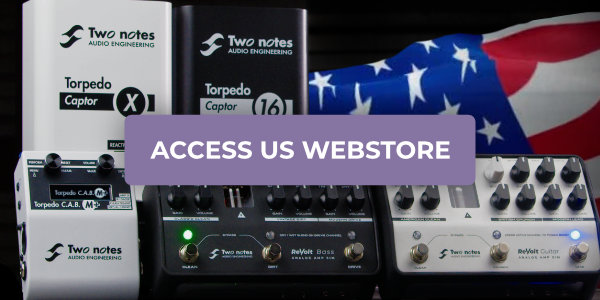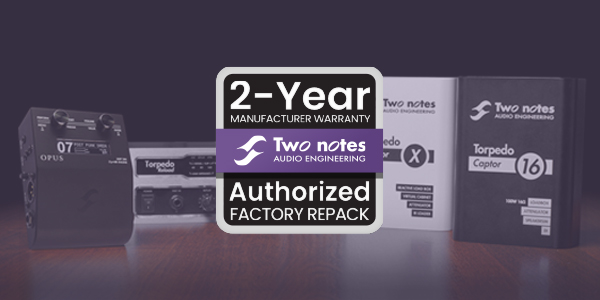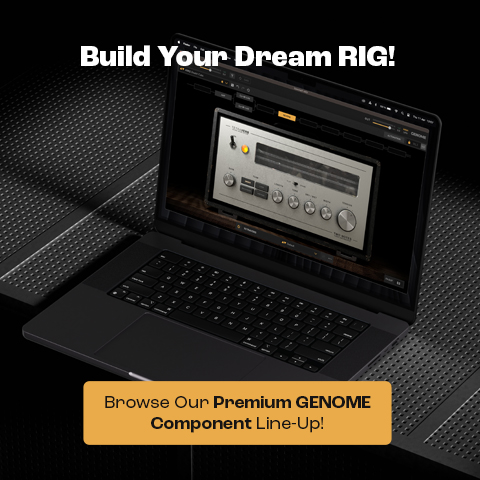The Torpedo Captor and the Torpedo Reload share some functionality (mainly the attenuator), but it is what separates them that makes each very important within the product range. If you are uncertain about which one to get, this article will detail their similarities and differences which will hopefully help you decide which way to go.
-
First of all, both products feature a reactive loadbox (with XLR output) which allows for silent playing/recording of your amp (ie, playing your amp without a speaker cabinet connected) via an attenuator. They both include a Wall of Sound license (16 virtual cabinets for the Captor, 24 virtual cabinets for the Reload) which means once you have connected them between your amp and your sound interface, you can use the Wall of Sound plugin (in your DAW) to get speaker and miking simulation, and play/record your amp, while monitoring through headphones or studio monitors. The load box impedance of the Torpedo Captor is fixed (comes in three version: 4, 8 or 16 ohms) but the load box of the Torpedo Reload has selectable impedance of 4, 8 or 16 ohms.
-
Both products feature a power attenuator: this means you can keep a speaker cabinet connected to your amp and play your amp loud, while reducing the literal volume out coming out of your cabinet. However, they differ greatly on the way they do it:
• The Torpedo Captor is passive (it doesn’t need any power supply). It features a simple, non-adjustable attenuated output (ATT). It also features a full-range, non-attenuated output (THRU). With the conjunction of the load box, the ATT and the THRU output, you have access to 3 levels of attenuation :fully attenuated (no speaker cabinet needed) -20db of attenuation (ATT output) or no attenuation at all (THRU output).
Note: the attenuated output (ATT) of the Captor can affect the tone of the speaker cabinet. The effect on the tone will actually depend on the actual impedance curve of the speaker cabinet. This effect can usually be corrected by adjusting the EQ on your amp.
• The Torpedo Reload was designed to overcome the limitations of traditionnal power attenuation, by using a totally different approach we call Re-Act. It is active (it needs to be powered), and features a continuously adjustable attenuated output, from no attenuation to full attenuation (no speaker cabinet needed). The impedance curve doesn’t vary with attenuation, which means your tone is unaffected, no matter the attenuation.
If you’re after perfect, adjustable, no-compromise power attenuation, with no tone modification whatsoever, you should consider the Torpedo Reload. If you just need simple and affordable attenuation, the Torpedo Captor has you covered. -
The Torpedo Captor features an analog speaker simulation. This means you can use the Torpedo Captor for monitoring without using a DAW and Wall of Sound, when playing without a speaker cabinet. This speaker simulation only has two settings (Guitar and Bass), isn’t IR-based, and can’t be edited, modified, or changed in any way. You will always get more realistic results in terms of speaker simulation with Wall of Sound or by using a Torpedo C.A.B. after the Captor, but in a lot of situations (typically on stage), the embedded speaker simulation of the Captor will cover your basic needs for silent miking. The Torpedo Reload doesn’t provide any speaker simulation. You’ll need to use a DAW and Wall of Sound, or a Torpedo C.A.B., to achieve silent playing (ie, withtout a speaker cabinet connected).
-
The Torpedo Reload provides a full set of tools for re-amplification: an instrument DI and a Replay circuit with Match function along with the attenuator. You can use the Reload for perfect re-amplification, which makes it a powerful tool for studios or home-studios. These functions are exclusive to the Torpedo Reload, and are not found on the Captor.





Any chance a future Captor X will have continuously adjustable attenuated output? The Captor X has exactly what I need for live performance except for continuous attenuation. The Reload has that but doesn’t have other features I need for recording (silent playing, speaker simulation, etc).
I obviously can’t disclose what is in the pipeline, but we are always innovating and new products are coming!